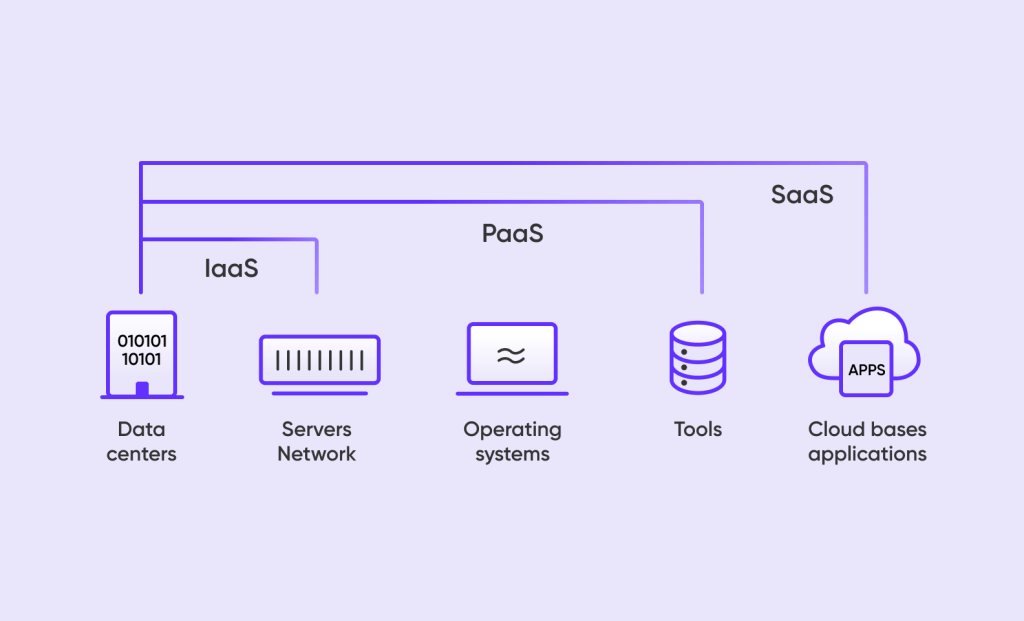Content Attributes
To perform at the expectation of customers cloud infrastructure solutions providers should know the value of custom designing and development. When an application is specially made for a specific platform it performs better and is easy to manage.
Here we have compiled the best practices, concepts, and procedures that will depict the top 6 ways to develop a built-in cloud-based application.
An Application that is a Collection of Services
A cloud application is deployed as a collection of services or APIs. That is built from data to service and then converted to composite applications or services. Many developers understand it but few mistakenly focus on the user interface instead of making it an independent function.

You deal with complex distributed systems in the process that can take advantage of loosely build applications. The application service can be separated physically, by executing machine instances aside from the services of API managers and governance technology. This will benefit in the future by giving reusability options for other applications or coarse-grained services.
Data Separation into Components
Cloud storage with coupled data application does not function to the optimal. When you deal with private and public cloud the importance of architecture in breaking out processing and data into separate components further enhance the performance. In this way, enterprises may benefit from commodity virtual machine instances within a public cloud while their data remains on the local server.
One should use a caching system for enhancing database communication. That is optimal when the desired data sits close to the application or service it needs to leverage. Some systems constantly read new data to perform better; these do not get much benefit from database caches.
Infrastructure and Protocols
The infrastructure should work independently as using a file as a name can cause trouble in continuously updating and changing file properties. The application should be resilient to the cloud environment and should resolve service endpoints or delegate the entire routing function to service than approach. This part is best known to the experts in cloud infrastructure solutions.
Avoid usage of uncertain protocols and remember that apps based on HTTP, SSL, and standard database, queuing and web service connections are resilient for long-term work. The protocols are available with packages built above them that can take multiple configurations and can tune to resiliency.
Optimal Communication between Application and Components
By decoupling the applications the performance gets better, by chatty application, components can be an issue. The constant communication between two or more components brings high latency than desirable. One should focus on designing applications that have combined communications into a single stream. Other strategies can be made considering the technical side of development.
Scaling and Performance Support
Cloud infrastructure solutions that generate results are those working on strategies for scalability support and performance betterment. Trough application models and designs that handle the overall load well. An example to explain can be that if 1000 or more users log into the application. How it will be able to handle it by delivering the query well?
There are several auto-scaling capabilities offered where division happens automatically. The efficient path is defined by understanding the workload profile and defining the scaling path aside from putting a mechanism to ensure that it will do what is required to scale.
Lastly, overall application performance is monitored by tools that are synchronized with an interface to enable better evaluation.
Systemic Security in Application
Systemic security should be designed and developed into application architecture. As while hosting an application in the cloud security is of premium importance. Many developers believe that security is an afterthought, but it can lead to severe issues. The security approach and technology are designed to keep the industry and market in mind.
As compliance with authorities and requirements requires proper research before execution. The cloud-based application should provide identity and access management (IAM). This reduces the security cost and has an agile security configuration. The benefits it brings can be judged by the fact that almost half of the existing applications migrating to the public cloud and nearly all the new applications built on the cloud will have it.
The advantages of Cloud-Based IAM include access from anywhere, user provisioning, and speedy implementation (Pent IO)
These are the top 6 ways to develop a built-in cloud-based application.



